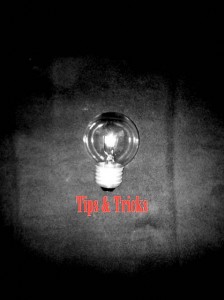Tips & Tricks: Letter Length
/ The other day, I sent an acquisition letter to the new development director at an organization I've worked with for several years. The letter had gone through the rounds with her predecessor, but we wanted him to make sure he was comfortable with the language, the tone, and most importantly, the facts as laid out in the piece.
His #1 comment? This letter is too long! Nobody's going to read all that.
The other day, I sent an acquisition letter to the new development director at an organization I've worked with for several years. The letter had gone through the rounds with her predecessor, but we wanted him to make sure he was comfortable with the language, the tone, and most importantly, the facts as laid out in the piece.
His #1 comment? This letter is too long! Nobody's going to read all that.
How long is too long?
The only good answer, of course, is as long as it needs to be. But there are a few general guidelines you can follow.
There was a time when 6-page letters were not unusual, but these days, most direct mail is 2 pages or 4 pages. Why not 3? Paper costs -- there's simply no good reason to have a blank page (the back of page 3) in your package. That's space that could be better used to sell your cause or make your case. If you're running 3 pages and can't cut, make sure your margins are nice and big, your paragraphs short. Try adding one more testimonial, or a personal story from the signer. But don't waste that last page!
A 2-pager
I like 2-page letters for simpler, more straightforward campaigns. Those that have easy-to-understand asks with no need for a lot of explanation or history work well in shorter letters. Urgent actions -- we have 14 days to save this animal's life!, for example -- are perfect for 2-page letters.
Sometimes financial constraints can dictate a shorter letter. If you need to save money, getting rid of that second piece of paper is an easy way to do it. But make sure you can still make your case in those two pages.
A 4-pager
There's a reason this has been the standard for so long: it works. No, people may not read every word, but they do skim through, and if they can see that you've used those four pages well -- with testimonials, facts, a story or two, and urgency -- they'll feel good about giving to you, knowing that you are knowledgeable and passionate about your issue.
Especially when you're introducing someone to your organization or asking them to take a specific action, it's nice to have that extra space to tell them why their support is so important right now.
Test, test, test!
Letter length is a fantastic test. You may think your donors like the short-and-sweet letters you've been sending out, only to find out they really do respond better when you tell them more. Often, organizations "cheat" on letter length by narrowing the margins and running paragraphs together. Test and see if more air in your letter -- even if it runs to 4 pages -- bumps up response.
Conversely, if you've been sending out 4-page letters for years, you might save a bundle by switching it up to 2-pagers.
Many of my clients like to switch it up depending on a number of factors: how many people are getting the mailing (the smaller mailings often get 2-pagers to save on up front costs), the subject, the action required, the signer, the printing turnaround (there are some 2-page formats that can be turned around in 48 hours at the printer), etc.
The message
Above all, the message you're communicating should drive the letter length. Donors don't like it when you pad your letter with boring repetition, just so you can fill out 4 pages. And they don't like feeling like you left out important details just to keep your page count down.
